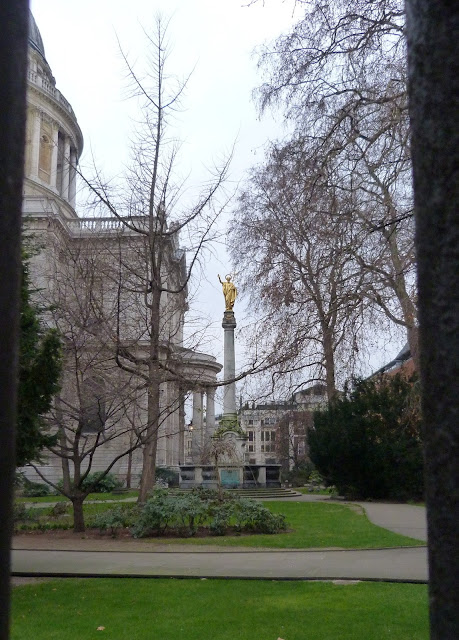May 29th
On this day in 1660, Charles II
was restored to the throne at the end of the Commonwealth and Protectorate of
Oliver and Richard Cromwell.
The Civil War that led to the
creation of the Commonwealth is discussed in Spital Square on our Thursday
morning “Aldgate, Bishopsgate and beyond – Priories and Play-Houses” walk (see
also our May 19th “Civil War and Commonwealth” blog post).
Other notable Civil War
localities in Greater London include Brentford and Turnham Green, where battles
were fought in 1642 (see “The Battle for
London” by Stephen Porter and Simon Marsh).
The site of the Battle of
Brentford is marked by a granite memorial and by a commemorative and
informative plaque (pictured, above).
According to the plaque, what happened here was as follows:
“Parliamentarians had arrived in
the prosperous market town on Friday 11 November. The following day the royalists marched from
Hampstead Heath and in the early afternoon broke through a parliamentary
barricade at the bridge over the Brent.
Near this information panel, the
royalists were delayed, fighting two or three hours until the parliamentarian
soldiers fled. This position was
defended by about 480 of Lord Brooke’s regiment and survivors of the earlier
fighting, with two small pieces of artillery.
The royalists soon gained the
upper hand. There seem to have been no
civilian dead despite the capture of the town.
About 20 royalists were killed, and perhaps 50 parliamentarians died in
the fighting with more drowning in the Thames.
Parliamentary Captain John Lilburne was amongst those captured”.
And what happened next was as
follows:
“Later that afternoon the
royalists pressed on towards London.
There were more parliamentary troops in a large open area, probably Turnham
Green and Chiswick’s Common Field. These
green-coated men of John Hampden’s regiment of foot charged five times, holding
the royalists back. But with night
coming and the royalists exhausted from fighting both sides disengaged.
The royalist soldiers who had
captured Brentford ransacked the town ...
The Battle of Turnham Green took
place the following day”.
John Gwyn, a royalist soldier,
wrote:
“We beat them from one Brainford
to the other, and from thence to the open field, with ... resolute and expeditious
fighting, ... push of pike and the
butt-end of muskets, which proved so fatal to Holles’ butchers and dyers that
day”.
* * * * * * * * * * * * * * * * * * * * * * * * * * * * * * * * * * *
To book a place on any of our
walks please either e-mail lostcityoflondon@sky.com
or phone 020 8998 3051.
Further information is available on our website www.lostcityoflondon.co.uk
and on the Lost City of London Facebook page







